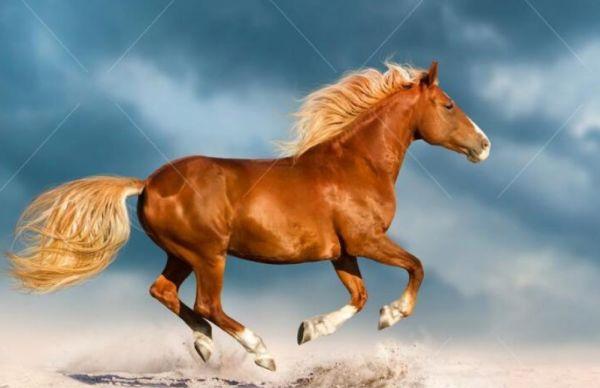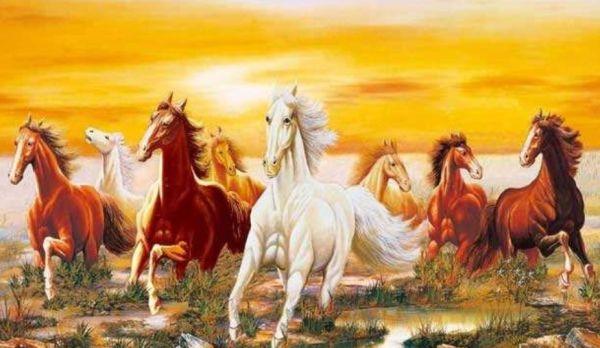什么词寓意飞黄腾达(飞黄腾达的本意与内涵的由来分析)




“飞黄腾达”这个成语也有祝福别人取得辉煌成就的意思,不过这个成语的来头并不简单,首先不妨将这个成语拆解开来一一分析。
“飞黄”与“腾达”这两个词刚好一个是主语一个是谓语,二者构成了主谓结构。“腾达”这个谓语动词很好理解,代表一种腾空起飞、直达天际的意思,寓意着向上、进取。
相对来说“飞黄”这个词,就比较晦涩难懂了,日常交际中好像很少见到这个词被单独使用。
其实“飞黄”源自上古时期,它本是神话传说中的一种奇怪的野兽,这种野兽长得和马一样,被称为“乘黄”,但因为这种马会飞,所以又被称为“飞黄”。
《山海经·海外西经》中有云,“有乘黄,其状如狐,其背上有角,乘之寿二千岁。”可见这种神马的长相与一般的马并不一样,而是与狐狸相近,说明长得比较漂亮,不过这种马的背上长了角,而且会飞,如果能骑上这种马就能拥有两千岁的长寿。
古代神话中有一种龙马与“飞黄”的描述相近,它曾出现在了黄帝花园中,后来黄帝便成为了华夏部落的首领。
值得一提的是,西方的古老神话中也有类似的神马,不过他们将其称为“独角兽”,这种马的头上有一只角,而且会飞,是吉祥的象征,由此不由得让人猜测,或许上古时期“飞黄”这种生物真的存在。
虽然“飞黄”源自上古时期,但“飞黄腾达”这个成语最开始兴起于唐代,源自著名文学家韩愈的一篇劝学文章。
韩愈曾在《符读书城南》中写道,“两家各生子,提孩巧相如......三十骨骼成,乃一龙一猪,飞黄腾踏去,不能顾蟾蜍。”,意思是童年时候相仿的两个孩子,一个肯读书、求上进,另一个不好好读书,后来读书的那个骑着飞黄腾踏而去,而另一个则像癞蛤蟆一样。
韩愈用“飞黄腾踏”这个成语表达了望子成龙的殷切期望,希望孩子能好好读书,做一个出色的人。
后来他的儿子果然考中了进士,虽然名气没有韩愈那么大,但也做了几十年的官。所以后人常用“飞黄腾踏”来祝福别人升官发财,经过数百年的演变,后来逐渐变成了“飞黄腾达”这个成语,一直被沿用至今。
译文:Analysis of the origin of the original intention and connotation of flying yellow
"Apprentice" this idiom also has the meaning of blessing others to achieve brilliant achievements, but the origin of this idiom is not simple, first of all may wish to break down this idiom to analyze one by one.
"Feihuang" and "Tengda" are just two words, one is the subject and the other is the predicate, which form the subject-predicate structure. The predicate verb "Tengda" is very easy to understand, representing a kind of take-off, straight to the sky meaning, meaning upward, enterprising.
Relatively speaking, the word "flying yellow" is more obscure and seems to be rarely used alone in daily communication.
In fact, "flying yellow" originated in ancient times, it was a strange beast in myths and legends, this beast looks like a horse, is called "riding yellow", but because this horse can fly, so it is also called "flying yellow".
"The Classic of Mountains and Seas · Overseas Western Classic" has a cloud, "there is a yellow, its shape like a fox, its back has horns, by the life of two thousand years old. Can see this kind of what looks and the general horse is not the same, but close to the fox, that is more beautiful, but this kind of horse long horn on the back, and will fly, if you can ride this kind of horse can have a long life of two thousand years.
In ancient mythology, a dragon horse similar to "flying yellow" appeared in the garden of the Yellow Emperor, who later became the leader of the Huaxia tribe.
It is worth mentioning that there is something similar in the ancient mythology of the West, but they call it a "unicorn", a horse with a horn on its head and the ability to fly, which is a symbol of good luck, which makes people speculate that perhaps the ancient "flying yellow" creature really existed.
Although "flying yellow" dates back to ancient times, the idiom "Apprentice Apprentice" first appeared in the Tang Dynasty, from a famous writer Han Yus essay urging him to study.
Han Yu once wrote in "Fu read south", "two children, children Qiao phase such as...... Thirty skeletons, like a dragon and a pig, fly away, not toads." One is willing to study and strive for progress, the other does not study hard, and then the one who reads books rides away on horseback, while the other is like a toad.
Han Yu used this idiom to express his ardent hope that his child could become a good student and become an outstanding person.
Later, his son did pass the imperial examination, and although he was not as famous as Han Yu, he also served as an official for decades. So later generations often use "fly leisure is stepping to bless others promoting to a higher position, after hundreds of years of evolution, then gradually into the idiom" the apprentice ", has been in use today.
,免责声明:本文仅代表文章作者的个人观点,与本站无关。其原创性、真实性以及文中陈述文字和内容未经本站证实,对本文以及其中全部或者部分内容文字的真实性、完整性和原创性本站不作任何保证或承诺,请读者仅作参考,并自行核实相关内容。






